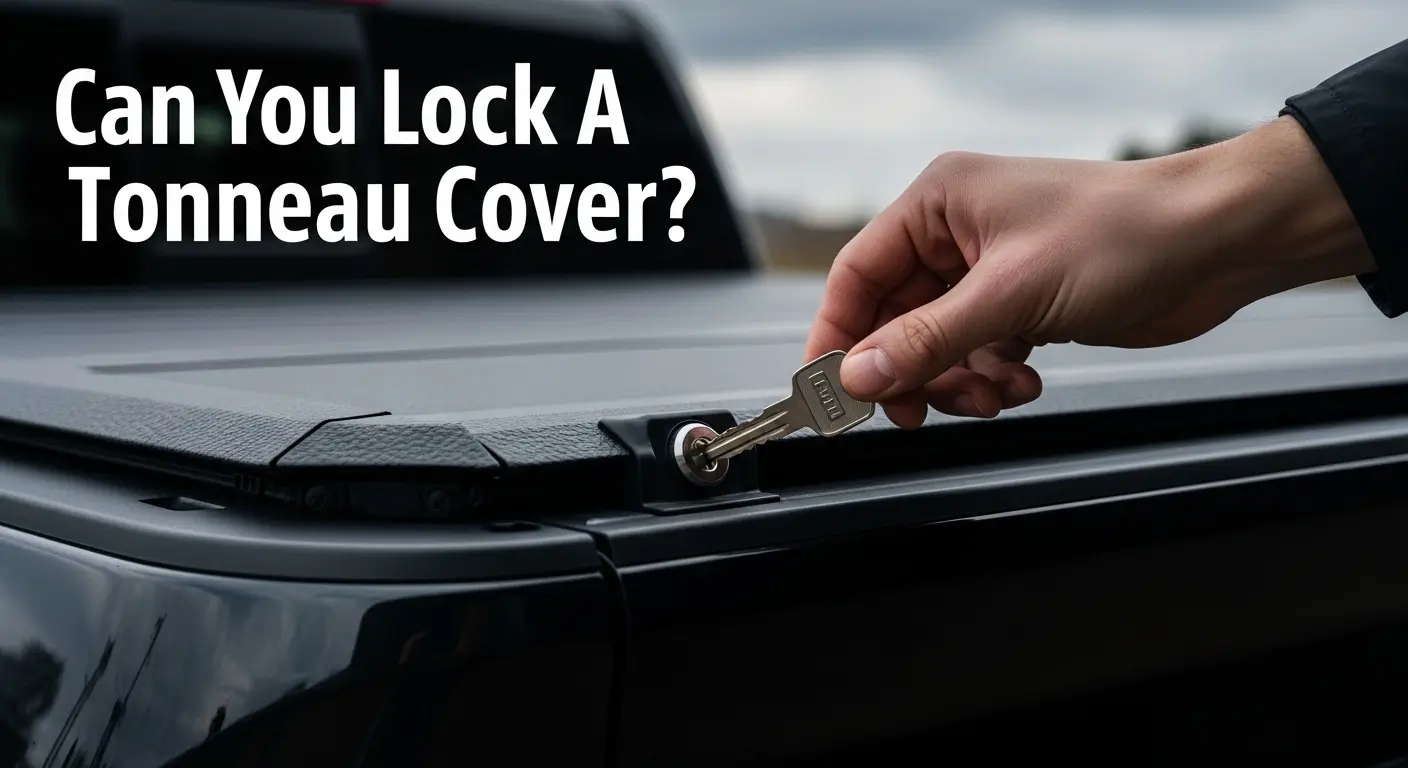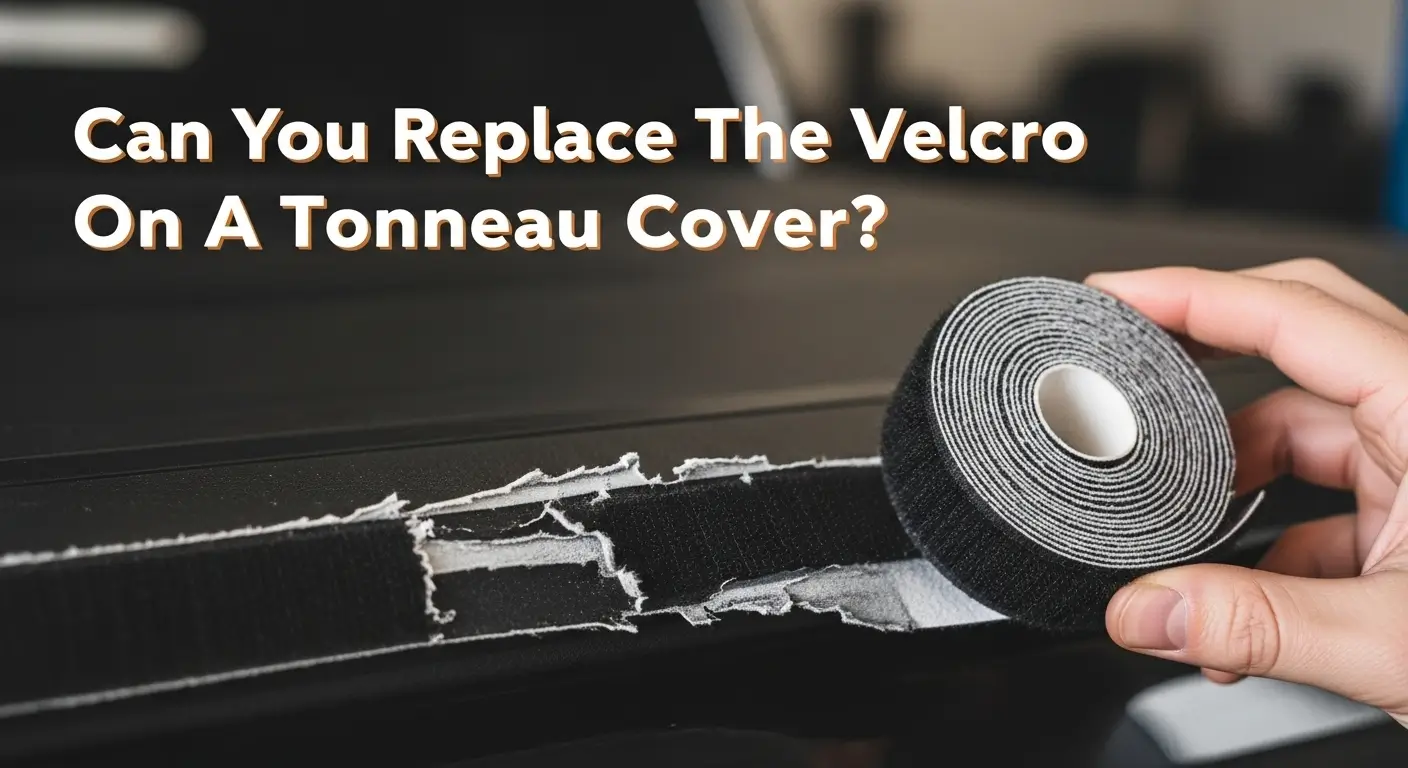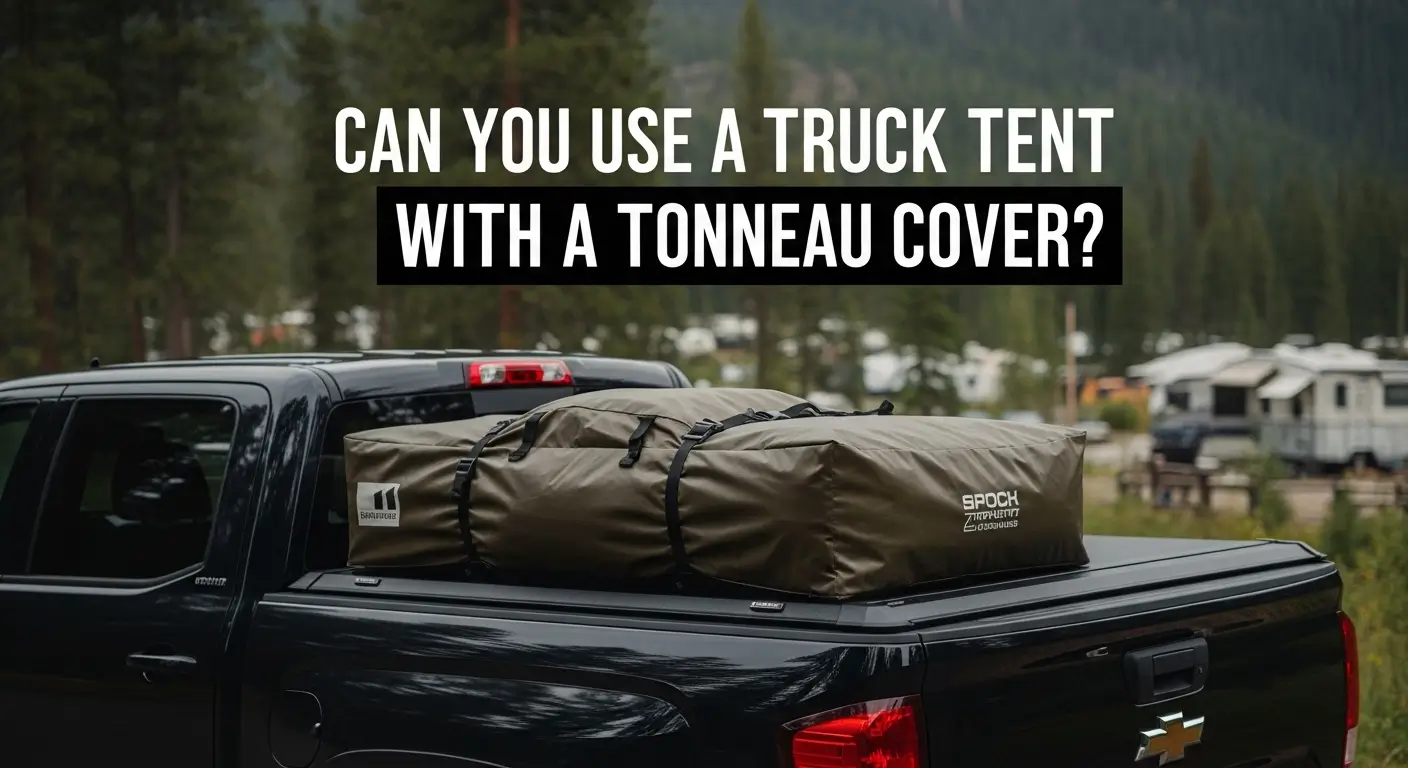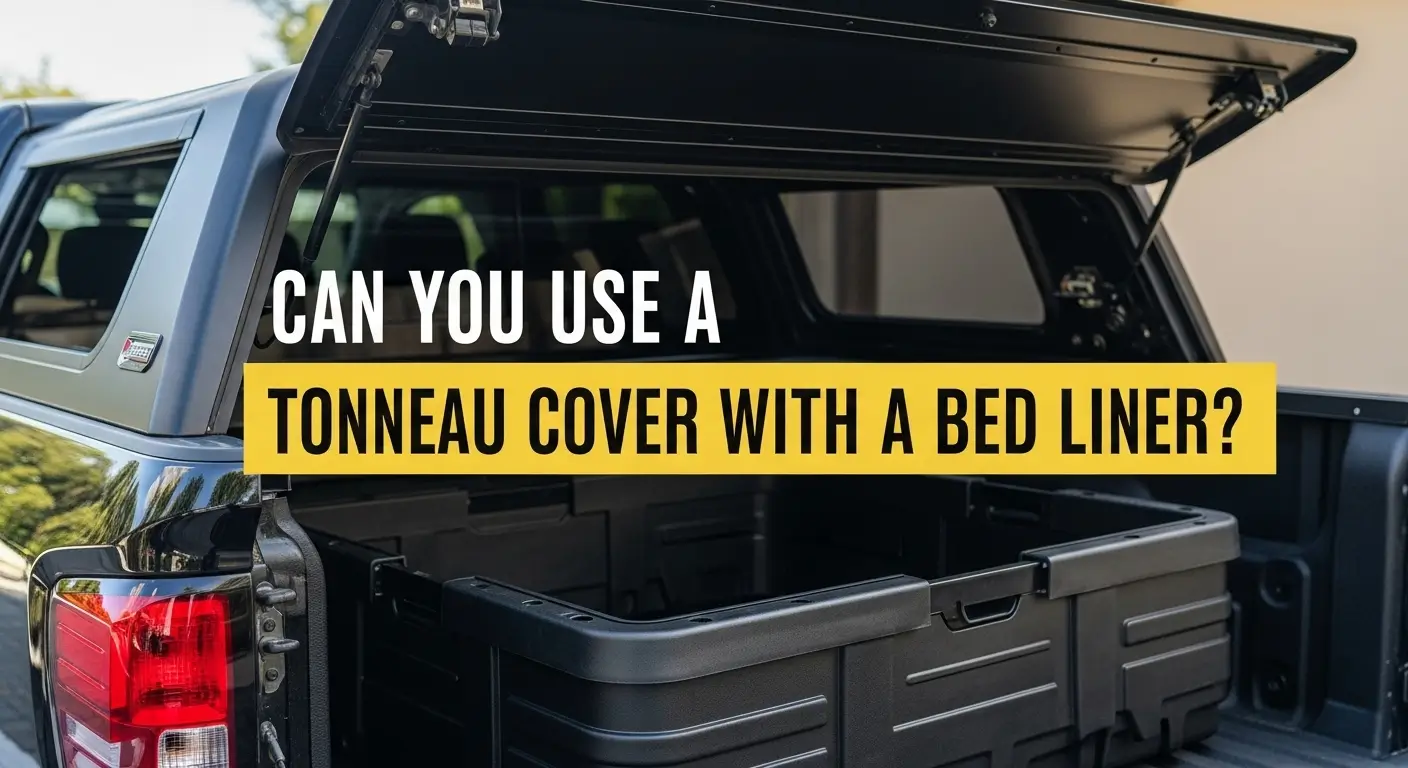Imagine this: you’ve got a pickup truck loaded with an oversized load – tall ladders or furniture – and your hinged tonneau cover won’t close.
Can you simply drive with it propped open? The short answer is yes, but only with caution. Driving with a tonneau cover open is allowed in most places so long as the cover and cargo are secured and within legal overhang limits.
However, leaving the cover open can obstruct your view, increase wind drag, and even pose safety risks. In this guide, we’ll explain what a hinged tonneau cover is, why drivers sometimes leave it open, and what the law says.
We’ll also dive deep into the risks (from blown-off covers to lost cargo), fuel economy effects, and best practices for driving safely with the cover open.
By the end, you’ll have expert tips and actionable takeaways so you can make an informed, safe decision before hitting the road.
Table of Contents
Key Takeaways and Best Practices
What Is a Hinged Tonneau Cover?
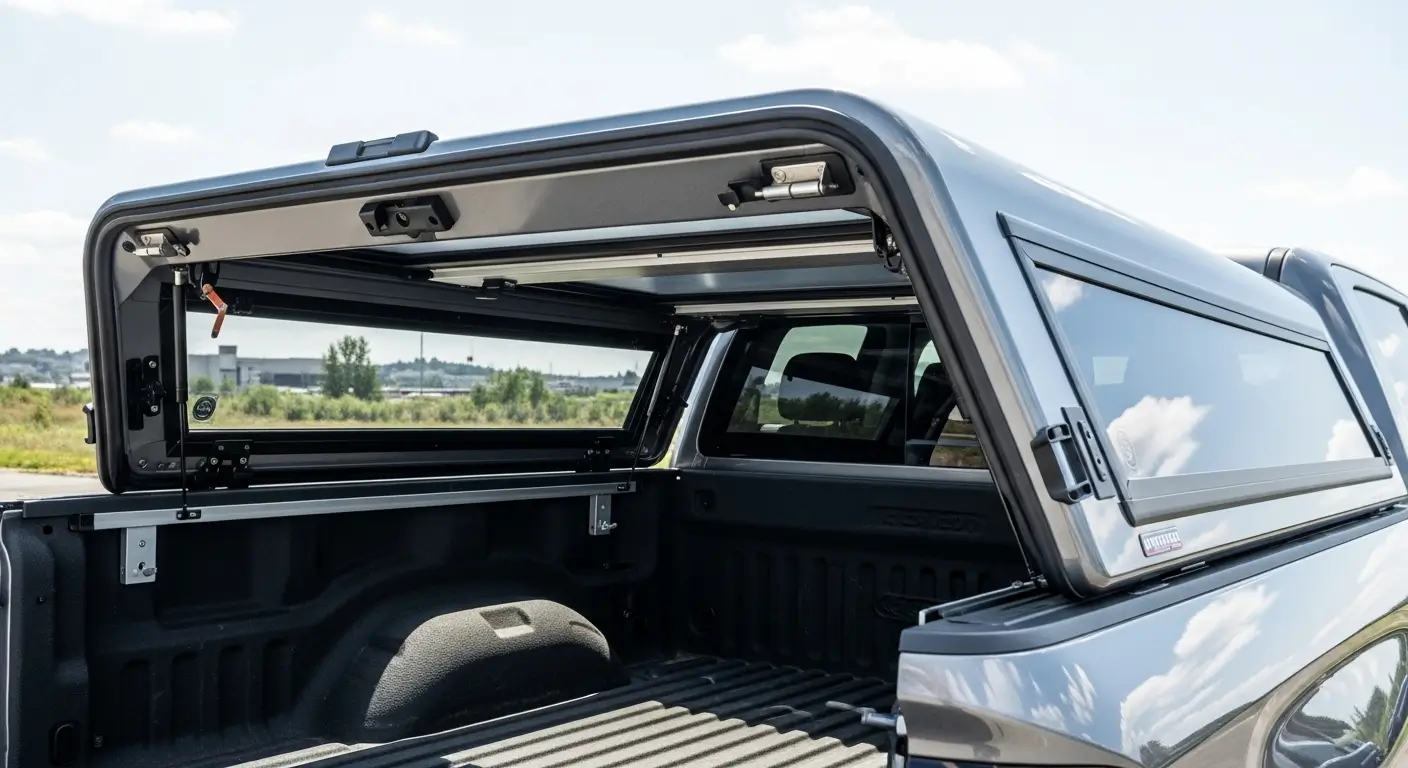
A tonneau cover is a hard or soft lid for a pickup truck’s bed. A hinged tonneau cover is typically a one-piece hard cover attached along one edge (either at the bulkhead/cab end or at the tailgate). Think of it like a car’s trunk lid: it lifts up on a hinge.
According to off-road experts, hinged covers “are solid, one-piece units that lift up like a car trunk” and they offer excellent security and weather protection.
These covers are usually made of sturdy fiberglass, ABS plastic, or aluminum. When closed, they keep cargo dry and secure.
When open, a hinged cover swings upward (or outward) to allow extra space, essentially extending the height of the truck bed.
Hinged covers differ from other designs (soft roll-ups or folding panels). For example, a roll-up cover coils up at the front, and tri-fold panels stack together.
A hinged cover stays rigid and heavy. They provide superior strength but must be handled carefully when open In practice, drivers must always secure the cover if they drive with it open – often using built-in straps or latches – because an unsecured cover can detach in the wind.
Why Would You Drive with the Cover Open?
There are several practical reasons a truck owner might drive with the tonneau cover open:
- Hauling Tall or Bulky Cargo: The most common reason is necessity. If you’re carrying items taller than the closed cover (e.g. furniture, ladders, lumber or kayaks), you may have to lift the cover. For instance, truck accessory experts note that drivers sometimes leave their covers open when hauling “large or long cargo.
- Convenience and Frequent Access: For short trips or constant loading/unloading (at a worksite or parking lot), leaving the cover open saves time. You can quickly reach gear without fussing with the cover each time. Some drivers even find it more convenient to keep the cover propped and ready.
- Improved Airflow or Aesthetics: In rare cases, drivers prefer the look of an open bed, or want extra airflow (for pets or plants, for example). Certain loads like hot concrete or moving sand might benefit from ventilation.
- Temporary Use on Private Property: Within a closed worksite, some people drive with the cover open just to move cargo around (though this is still risky on public roads).
These reasons are all understandable. But before you drive away with the cover up, ask: Is it legal and safe?
Is Driving with an Open Cover Legal?
There’s no universal ban on driving with a tonneau cover open, but laws vary by location and situation. In general, the governing principle is that any uncovered load must be secure and within legal limits.
Open Truck Bed Rules
FindLaw explains that all states allow pickup owners to drive with the back open when carrying bulky cargo, as long as the load stays within federal overhang limits.
In other words, if the cover is open only to accommodate legitimate cargo (and nothing extra protrudes illegally), most jurisdictions permit it.
For example, federal regulations allow up to 3 feet of front overhang and 4 feet of rear overhang on a truck, so long as any protruding items are properly flagged. A hinged cover alone typically won’t exceed these limits unless it’s very large.
State Variations
However, some states have specific rules. A handful of states (e.g. Texas, Kansas, Illinois, Minnesota, Maryland, Nebraska, New Jersey) prohibit driving with a tailgate, door, or tarp “not securely in place”.
By analogy, they could view an open or flapping cover as non-secure. For instance, Texas law bluntly states you cannot drive if “a tailgate, tailboard, tarpaulin, door, or fastening device is not securely in place.”
That suggests if your cover is loosely open, you could get a ticket. Always check your local state laws on overhang and unsecured loads – it only takes one officer to disagree.
Cargo Securement Laws
Regardless of state, cargo laws require that any load or cover be firmly tied down. The FMCSA (federal motor carrier safety) rules, for example, mandate that “all cargo must be firmly immobilized or secured on or within a vehicle”.
That means if you drive with the cover open, any cargo (or the cover itself) must be secured so nothing comes loose.
Note: even though FMCSA rules target large commercial vehicles, the principle applies to pickups too: an unsecured cover is like an unsecured load and can violate securement laws.
In summary, it’s generally legal to drive with an open cover if it’s done safely and the cargo complies with overhang rules.
But if an open cover obstructs your view or is unfastened, many states would consider that a violation. When in doubt, err on the side of caution: secure everything with straps and lights, or keep the cover closed when possible.
Effects on Fuel Economy and Performance
With the cover open, aerodynamics go out the window (literally). Engineers and truck tests have long shown that a closed tonneau cover streamlines airflow.
For example, RealTruck reports that a properly installed cover can reduce drag and “yield nearly a two percent increase in fuel economy,” especially using lightweight soft covers. Some studies even claim 5-10% fuel savings with a cover versus none.
Conversely, an open cover erases those benefits. Multiple sources note that driving with the cover up significantly reduces MPG. You’ll notice gusty side-winds in your cab and a louder road roar. Over long hauls, this can translate into a lot more fuel burned.
In practical terms, if you drive 1,000 miles a month, a 5% efficiency loss might cost you several gallons extra each trip.
Aside from fuel, the cover may flap or strain under wind forces. A rigid cover held vertically can act as a brake parachute at speed, making handling more sluggish.
It also places extra stress on the hinge and supports; fastening straps (if any) will bear more load.
Key takeaway: Closing the tonneau cover is a small step that saves gas. If you must drive with it open, expect up to a 10% drop in fuel economy and be prepared for extra engine noise and wind buffeting.
Comparing Cover Types and Alternatives
While hinged covers are the focus, it’s worth noting how other designs handle open-driving:
Tri-Fold/Quad-Fold Covers
These can be folded back in stages. Some allow partially open driving if folded and strapped. For example, many tri-folds have a built-in latch to lock the folded panels together.
However, experts warn: you generally cannot drive with just the rear panel open.
Either fold the front panels up or remove the cover entirely. If you have a folding cover, follow the manufacturer’s guidance precisely (some even advise only driving with it fully closed or fully removed).
Soft Roll-Up Covers
These simply roll up to the cab. Most have straps that anchor the rolled cover. You can drive with them up as long as the straps are engaged.
They’re light, so the wind stress is lower. But they offer no solid barrier, so cargo visibility and theft remain issues.
Retractable Covers
These slide into a box at the cab. You could retract them fully, but then you’re essentially like having no cover.
Some drivers leave the tailgate up and the cover retracted for big loads, but that greatly ups drag.
If you frequently haul oversized loads, consider alternatives rather than driving with the cover open. One safe solution is to remove the cover beforehand.
For most hinged covers, detaching is possible (though cumbersome). Without the cover, you eliminate the sail effect and secure your cargo properly. Another option: invest in a bed extender or trailer for those special trips.
In conclusion: A hinged tonneau cover is designed to be closed during driving for safety and efficiency. When you do need it open, treat it like any unsecured load: fasten it, tie down your stuff, and obey the rules of the road.
By taking these precautions, you can transport odd-sized cargo safely and legally. Always prioritize security over convenience; if you’re unsure, it’s wiser to remove the cover or use an alternative than risk an accident.
With the right preparation, your truck can handle big loads without incident – cover up (or down) wisely.

